My go-to antenna for a long time has been the Wilson Wide Band Omni-Directional Marine Antenna. One of the main reasons besides performance is the build quality and marine mount. There are better antennas in terms of gain, but they have issues with mounting, quality, and longevity. You can read more about my testing with the Wilson and other antennas in Best LTE antenna and booster for the boat.
Poynting Antennas
Poynting has been around since 2001 and is based out of South Africa with a satellite office in Germany. They have a bunch of different antennas and technologies, and a really cool diagram showing all of them, their purpose, frequencies, and more. I had used some of their equipment a few years ago, but was intrigued with their 400 series antennas.
I chose the following two antennas and used them for the last few months:
- OMNI-400 – omni directional antenna with a max gain of 7.5 dBi
- OMNI-402 – 2×2 MIMO omni directional antenna with a max gain of 6.5 dBi
The OMNI-400 is a single cable omni antenna similar to the Wilson, while the OMNI-402 is a dual element 2×2 MIMO omni antenna with two cables, all in one antenna. For the 402, this means you could connect it to your router or other device and have a single-unit diversity setup, hopefully providing better throughput in higher signal areas, and longer reach in lower signal areas. Note that you would need two cables from the antenna to your device. You can read more about antenna diversity on Wikipedia.
Help support SeaBits and purchase your Poynting antennas from Milltech Marine, a local company I trust and have an affiliate relationship with:
Poynting OMNI-400
Poynting OMNI-402
Installation and Build
As you can see from the picture at the beginning of this article, the OMNI-402 (top) is a bit larger than the OMNI-400 (bottom) – the pictures and boxes are pretty accurate representations of the overall size. This would make sense since the 402 has two elements.
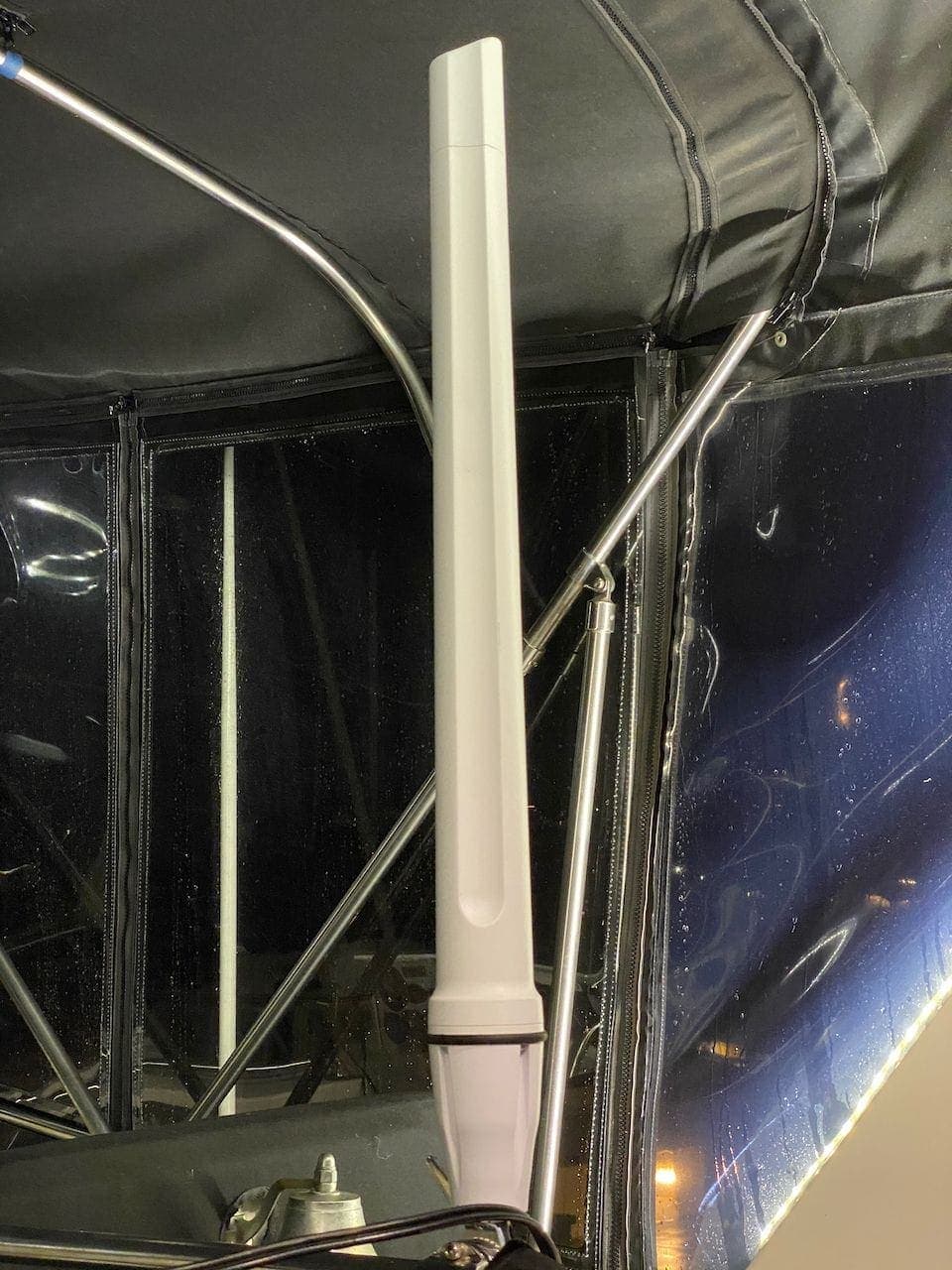
One thing that really impressed me with the Poynting antennas was their build quality and mounting options. Most antennas I have used have really poor marine mountings, or none at all. Many require you to reverse twist your really nice low-loss cable coming to the antenna, so that when you screw the antenna on the marine mount, it doesn’t spin the cable and destroy it. Even the Wilson marine antenna has this issue.
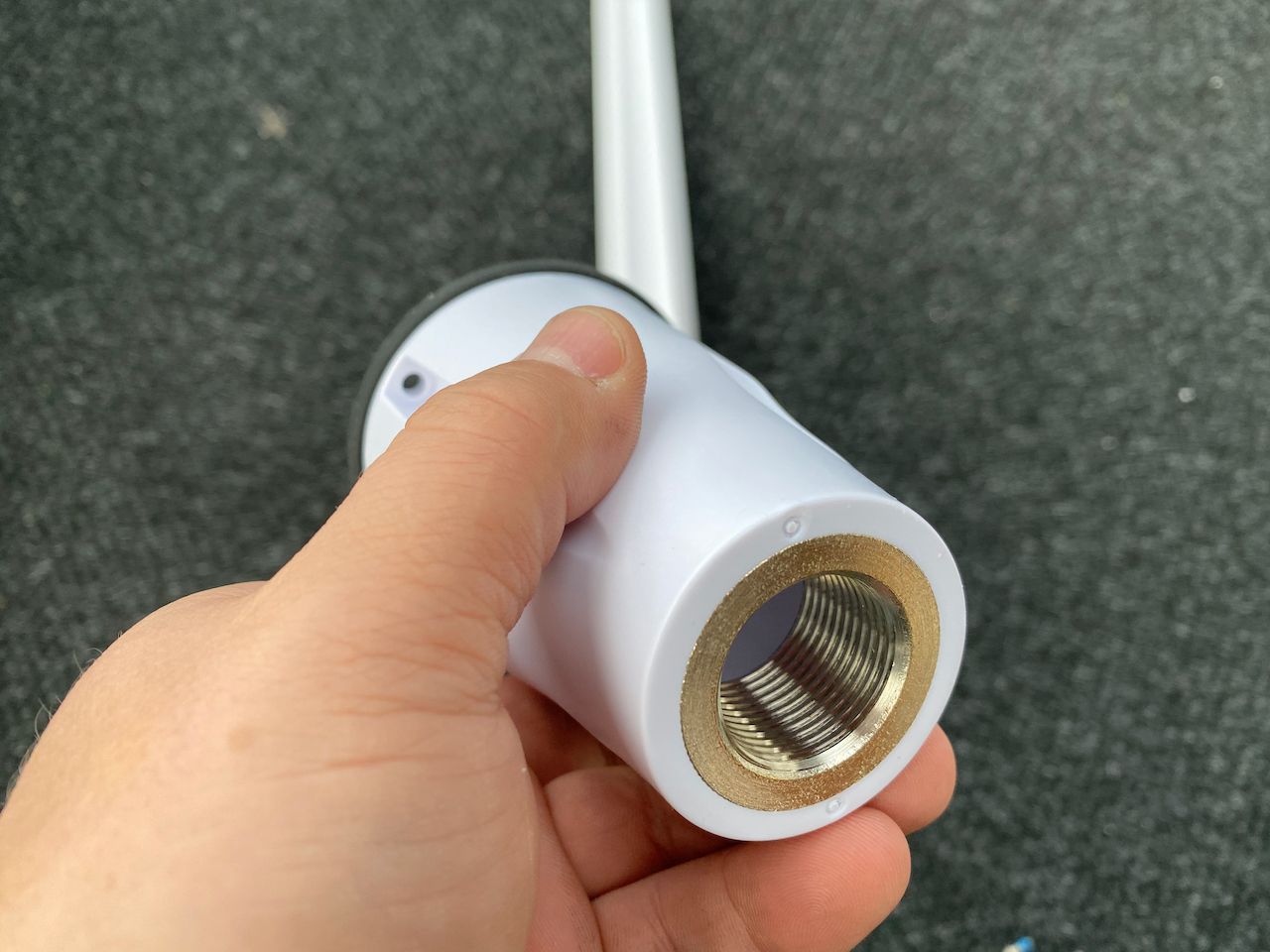
The Poynting antennas come in modular pieces. The bottom portion includes a well built base with a marine mount and a large hole to pass cables through. It is separated from the upper antenna portion.
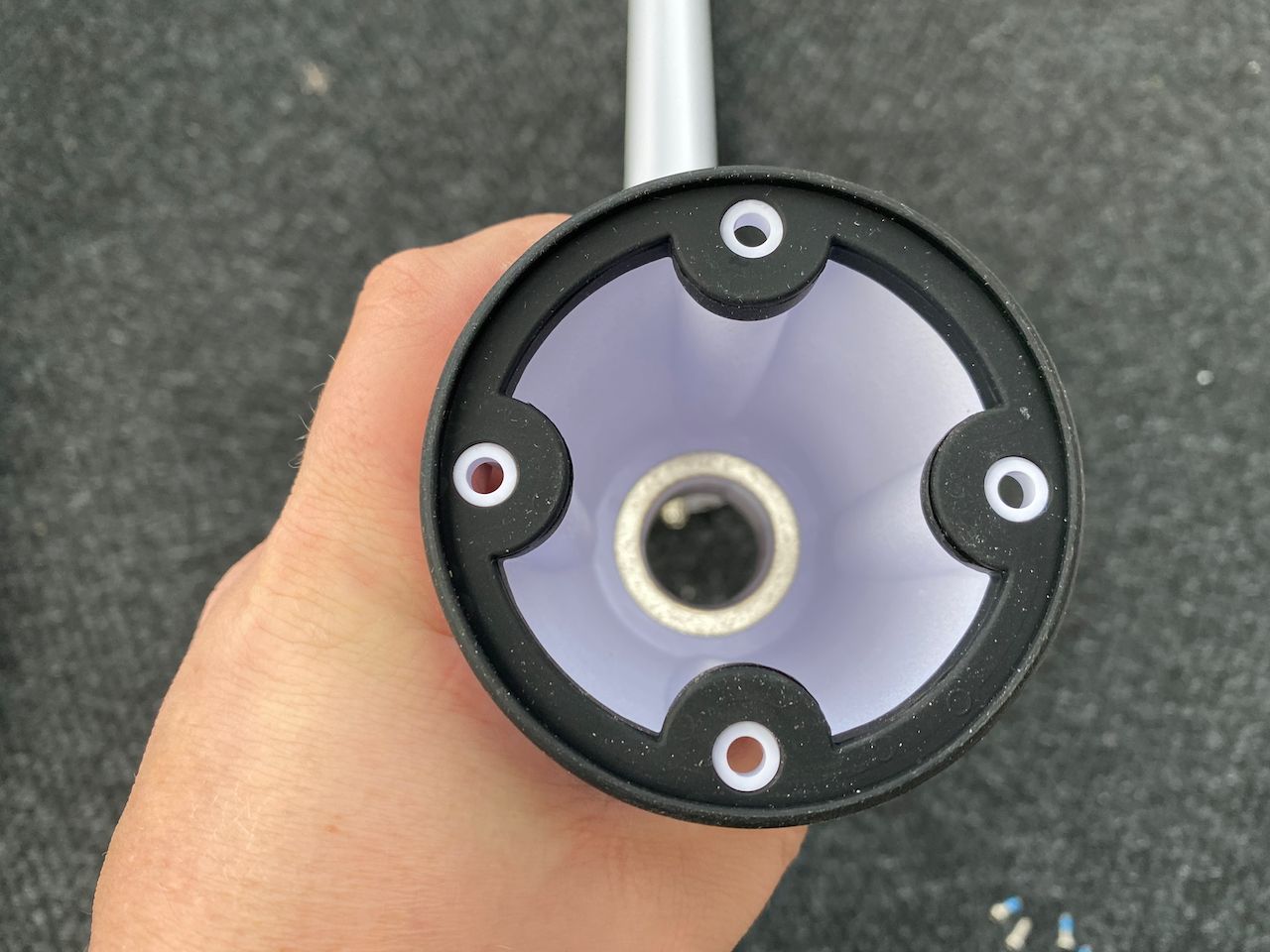
The top of the mount portion includes a thick rubber seal, and four holes for the screws that go up from the bottom into the antenna. This allows you to screw down the base very tightly and thread the antenna cable through the hole without having the antenna in the way, reverse spinning the cable, or any other nonsense. Very well thought out approach to mounting.
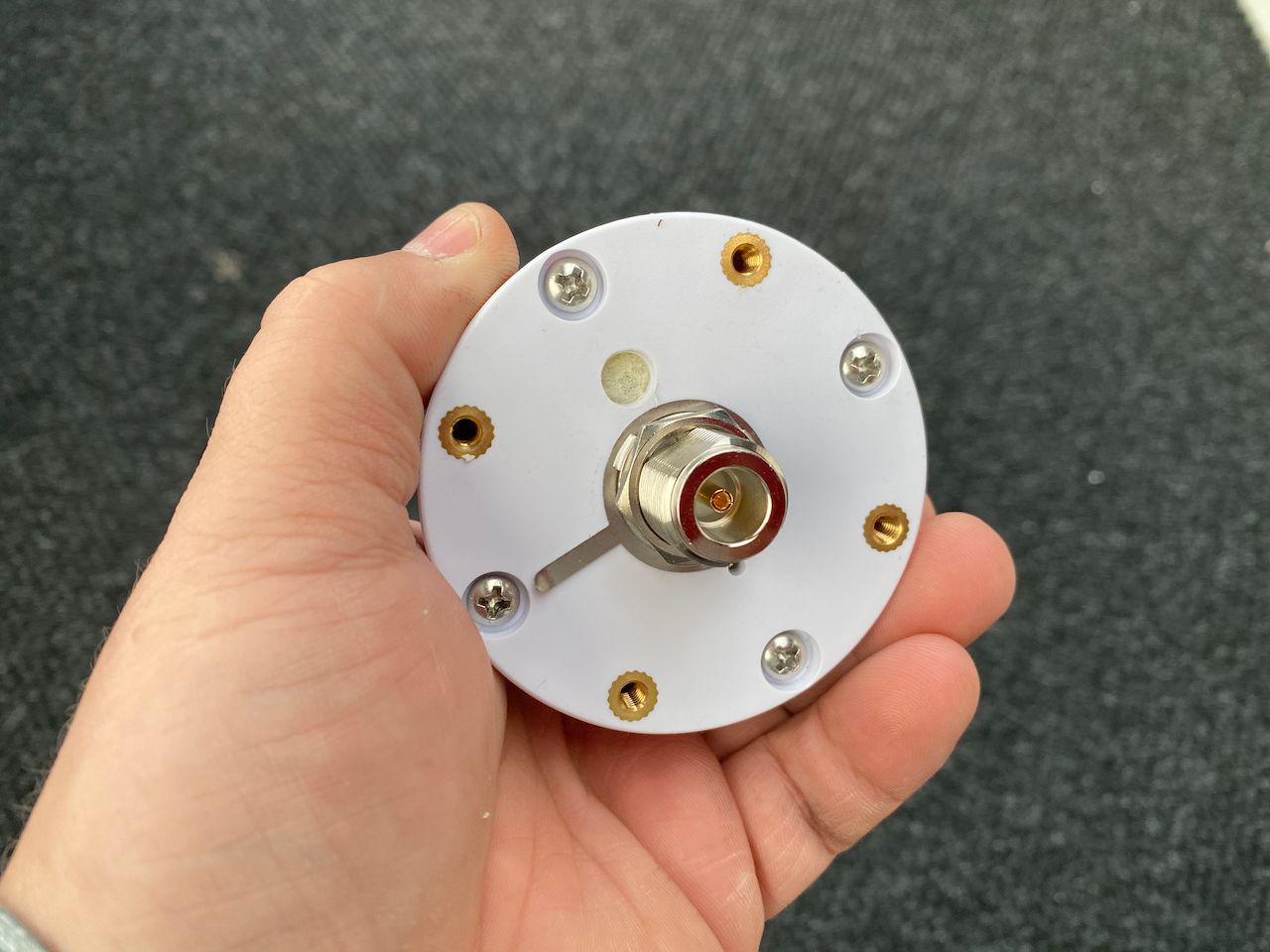
The bottom of the antenna has matching screw holes and, of course, the cable connector. Installation with this system cannot be overlooked – this is the best marine installation setup I have seen in an LTE antenna.
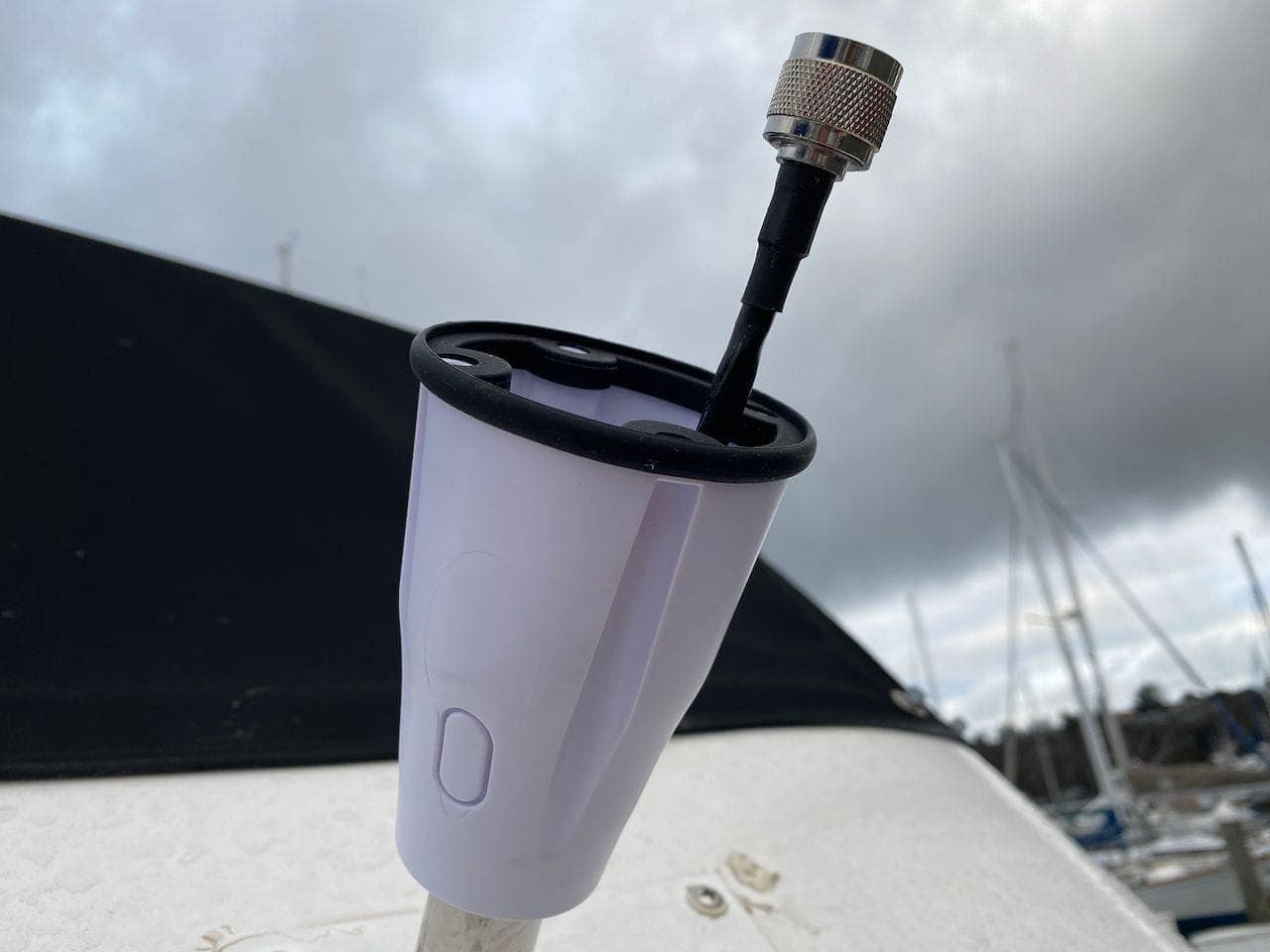
If you can’t route your cable down the marine mount, there is also a punch out that you could use on the side of the mounting base. However, it is not big enough for a standard connector – you’d need to run the cable the other direction with the small end threaded from this location first.
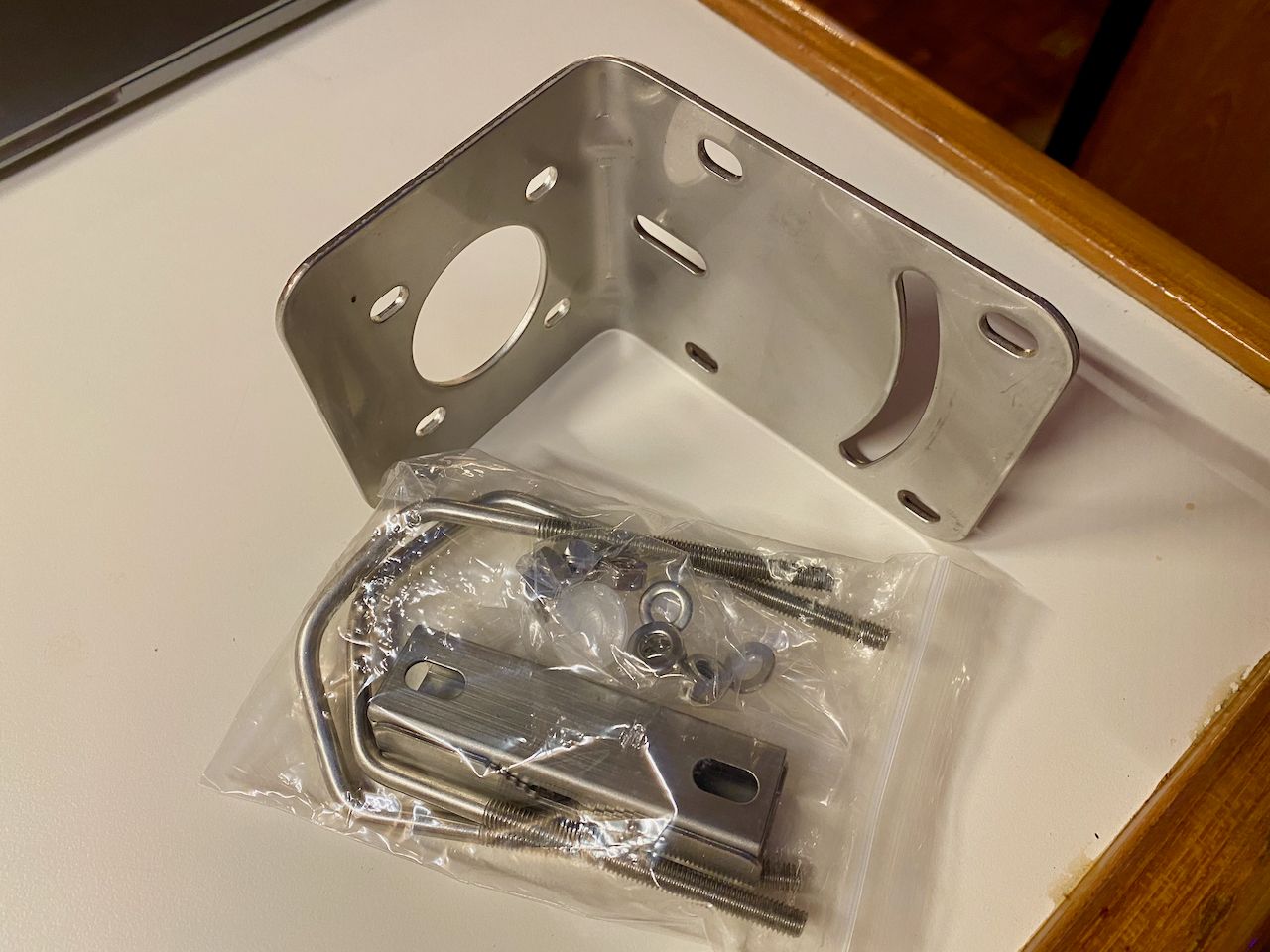
Poynting also include a big beefy stainless steel L-bracket and associated hardware so you could attach the antenna to a pole or other vertical item. This is usually an add-on item for antennas, or it is not marine grade, and rusts or looks bad within a few months.
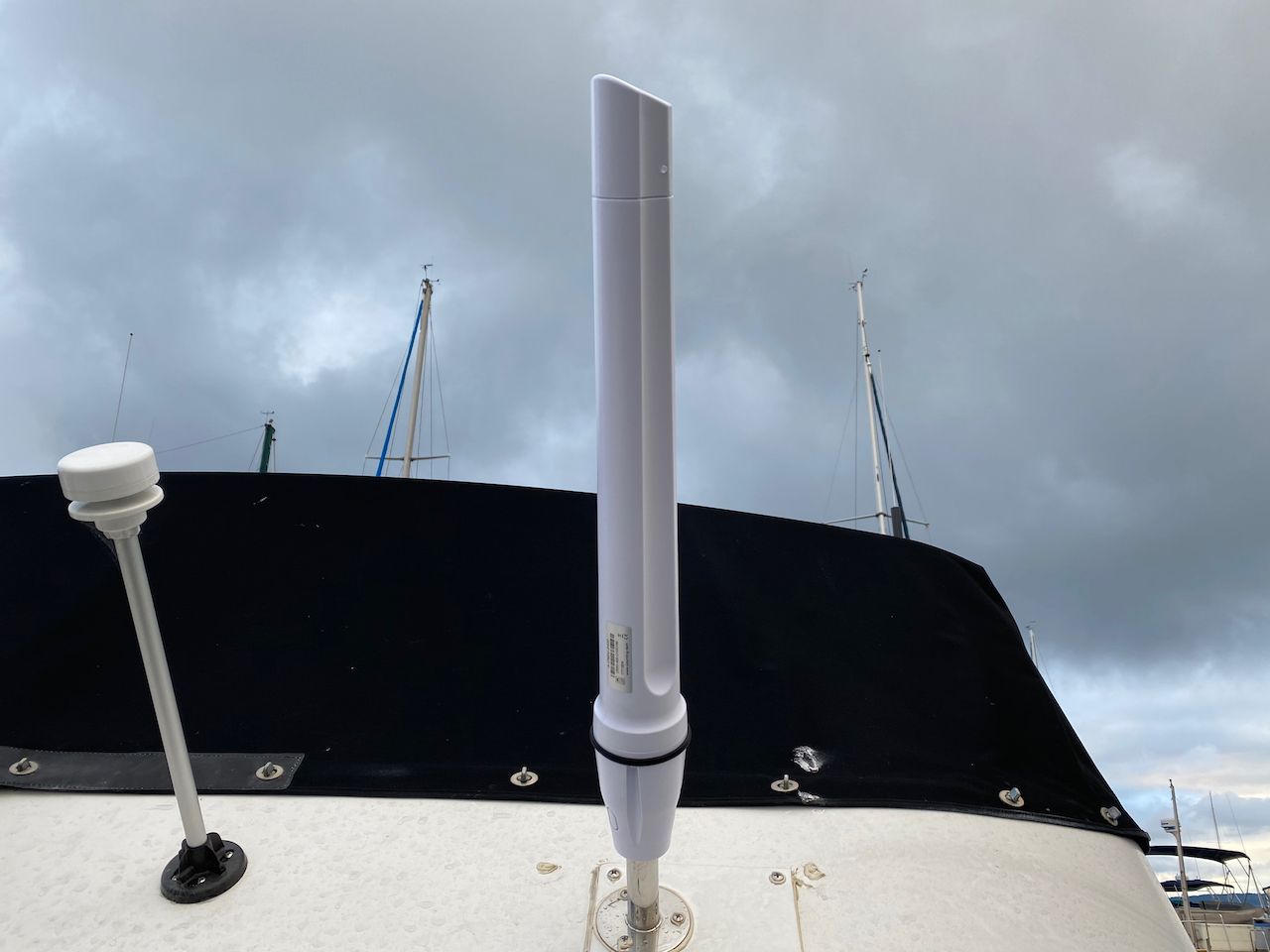
The top of the antenna feels nice and weighty, but not overly heavy. It has an aerodynamic design, and is quite nice to look at.
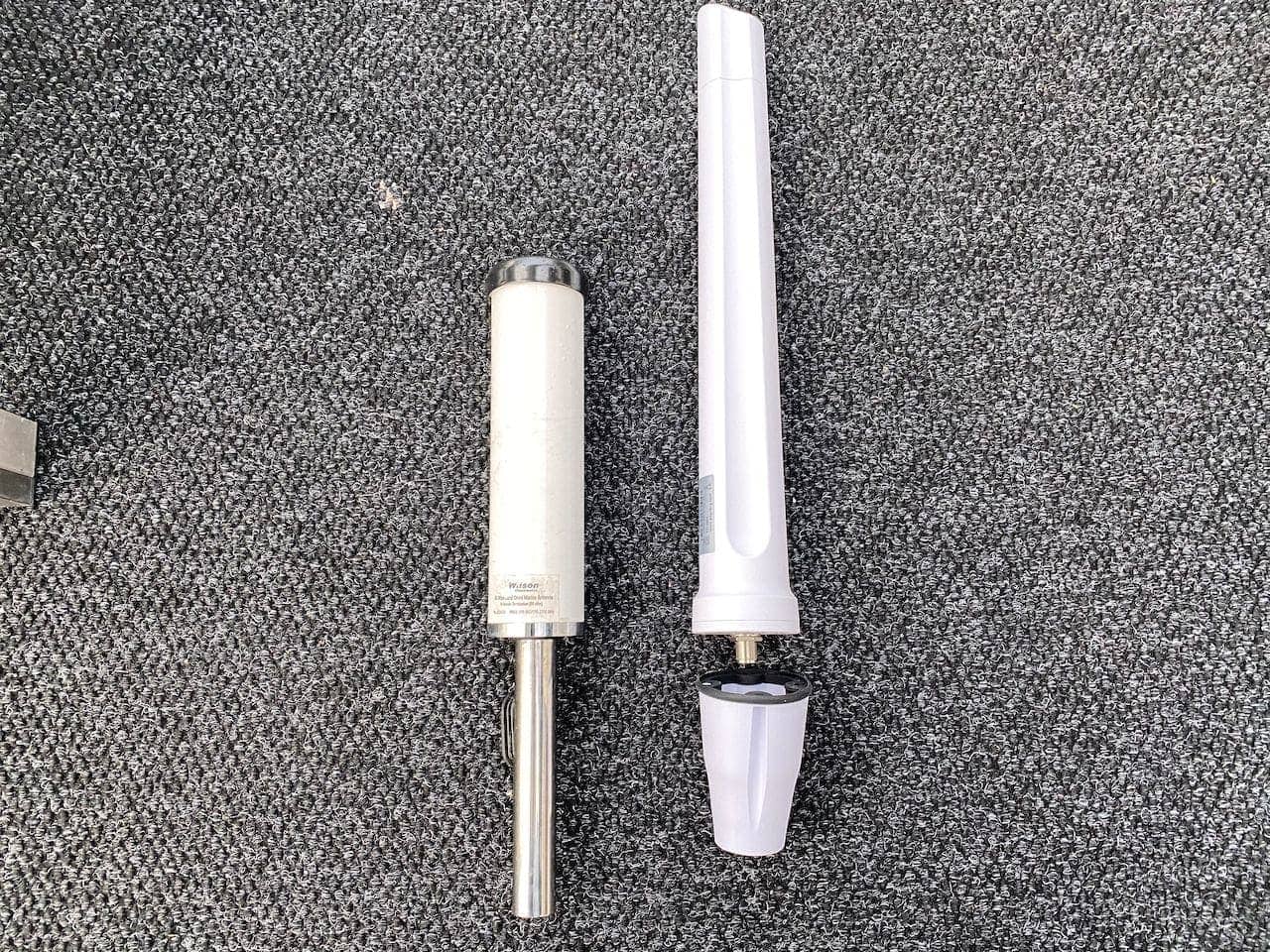
Compared to the Wilson marine antenna, the Poynting OMNI-400 is almost twice as tall. The OMNI-402 is even taller.
Specifications
Both antennas have really excellent specification sheets on Poynting’s website:
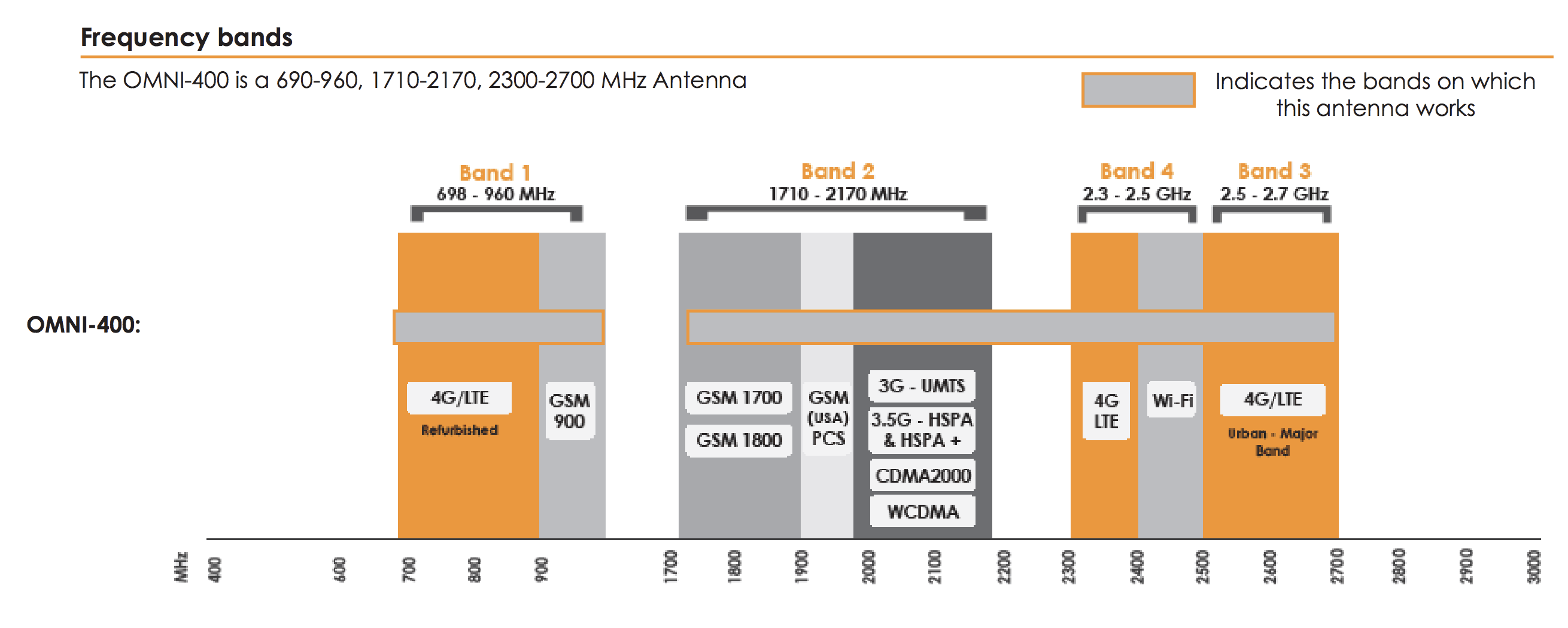
I really appreciate that Poynting not only includes a good description of the specifications and features, but shows mounting options, a graphical representation of bands and frequencies covered, VSWR and Gain charts, and radiation patterns. Not all manufacturers provide this – you may have to request it from them specifically, if they even share it.
Poynting also say you can use these antennas for snagging remote WiFi signals, and even show them in a diagram with a splitter to allow you to switch back and forth. I personally prefer the MikroTik for this, but I could see how this could be useful on a sailboat or other boat with limited outdoor mounting space. I assume it would be mutually exclusive, however, and that you could only use one device at a time.
Both antennas cover the same frequencies which include all of the major bands used by US and Canadian cellular providers, both for 3G and 4G/LTE.
The OMNI-400 claims 7.5 dBi peak gain, while the 402 claims only 6.5 dBi but of course has two elements and cables.
Testing Results
I’ve been using these antennas for a while, swapping back and forth during various conditions, similar to what I’ve used in my previous methodologies. This included 6 different locations including my marina, several urban areas, and several remote areas. It also included two different LTE providers, T-Mobile and Verizon.
OMNI-402 Results
I had mixed hopes for this antenna, having had very OK-to-poor results with any multi-element antenna in the past. Those hopes were mostly fulfilled, as I didn’t see groundbreaking performance, but I did see a difference potentially worth considering.
Overall, the antenna performed well. At some points it performed just about as well as the Wilson marine. I had hoped to see better throughput results given that it is a diversity antenna, but those results were mixed. Sometimes it was faster than other choices, but overall it was just a solid performer.
In some limited situations, I saw much higher throughput than with a single antenna of any kind, and I suspect this was directly attributed to the dual elements / diversity. However, this was only with very specific, urban areas where the throughput side of diversity came in to play. Diversity can also help with hard to reach signals, but with the OMNI-402, I didn’t see that as much as I would like to – the OMNI-400 was much better.
Overall, I don’t think the OMNI-402 is worth the $400+ price for what you get. It would likely be better for diversity to have two OMNI-400’s mounted apart from eachother at the same cost.
OMNI-400 Results
This antenna outperformed the OMNI-402 easily, and outperformed all other antennas I have aboard – whether mounted or in boxes. It was better than my standard Wilson antenna, and even the BoatAnt antenna, which held the record for best performing antenna even though it had a terrible marine mount, and the company stopped making it.
The OMNI-400 did well in all conditions – at the dock, underway, in urban areas, and in remote areas.
Compared to the Wilson, it outperformed it by a measurable amount every time. Sometimes this was just a little bit better signal in the Peplink dashboard, resulting in a bit more throughput. Other times, it was a significant improvement with double or triple the performance – upload, download, lower latency, better signal.
I was very surprised at how consistent the antenna was in all of these conditions.
For $200, this is my new recommended antenna for anyone needing a good quality marine-grade LTE antenna for a booster or router.
Conclusion
The Poynting OMNI-400 is my new favorite marine antenna for a couple of reasons:
- Marine quality mount
- Easy to mount and keeps your cable safe
- Performance
After several years of the Wilson being the top antenna, I’m happy to see innovation continuing in the industry, and can easily recommend the Poynting in its place. For $200 you’ll end up with an easier to mount antenna with better performance.
Archived Comments
These are read only comments from the old system. Scroll down to participate in SeaBits Discussions, our new interactive forum attached to each article.
Anthony W Baker
February 20, 2020 at 7:36 pm
Steve – sorry to bother but would the OMNI-400 be a good solution for my Verizon 8800 Jet Pack. It appears I would need a cable adapter…any advice you would be will to share? Thank you in advance.
Owen Anderson
April 29, 2020 at 8:43 pm
I see that the Omni 400 advertises being able to use it as a dual wifi/LTE antenna with a splitter. Have you ever tested such a configuration? Any thoughts on the pros/cons versus dedicated antennas?
Giles Proctor
June 1, 2020 at 3:36 am
Agree, I’m half-way through installing an OMNI-400 (based on SeaBits strong review), and very impressed with initial signal testing.
J Graham
June 16, 2020 at 2:56 am
Hi Steve –
Many thanks for the great research and helpful information. I’m a fellow PNW boater and keep my boat in Anacortes. She is a Fleming 55. I’d like ot ask your advice, based on your findings, on the antennas that you would use if you were me.
I have a Pepwave MAX BR1 MK2 in my pilothouse. I have two antenna cables that I can use that run to my boat hardtop. Neither are ethernet wires. One connects to a Shakespeare 5239 and one to a basic older Wifi antenna. So I have two to work with as I spec my new antennas for Cell data and Wifi. I have the MAX BR1 in bridge mode and run a Ubiquiti Unifi router.
I am guessing from what I read that you would suggest I use the following, is that right:
Wifi: Poynting OMNI 496
LTE: Poynting OMNI 400
Would you add the weBoost Drive Reach, and connect it to the OMNI 400? And if so, would it be then hardwire connected to the MAX BR1 to the Cellular Main?
And if I skipped the Drive Reach unit and direct connected the MAX BR1 to the OMNI 400 (or existing Shakespeare 5239), then would it be better to just use the two small antennas that come with the MAX BR1 (since there are two for MIMO)? Or connect the OMNI 400 to just one of the Cellular (Main or Diversity)? I’m not very good with MIMO and Diversity…just learning.
Again Steve, thanks a ton. Really appreciate your insight.
JG
J Graham
June 18, 2020 at 3:43 am
Thank you! Excellent.
Adi D
August 11, 2020 at 1:55 pm
Hi Steve,
In a separate post you mentioned your current setup is now the MAX Transit
CAT 18 with dual 402s. Given the point you make about diversity antennae being useful only in good coverage/urban settings, does it make sense to use that or is it better to still stick with 2 stock antenna as aux and 2 400s as the main setup?
Thanks for the incredibly useful website
Steve Valvasori
December 9, 2020 at 3:29 am
Hi Steve,
Last year I “installed”/placed a ZTE MF288 (https://community.zteusa.com/discussion/54048/zte-mf288-turbo-hub-which-antenna-is-for-what) on the seat in my flybridge to provide internet access. Our marina WIFI is always suspect and when we are out on the weekend in a bay, the LTE signal can be quite weak. This has worked reasonably well, but still suffers in low signal area’s – and also has the possibility of being sat on. It requires a 120VAC plug, and while I’d rather it ran off 12V, it runs fine on the inverter. We only need good data access, actual cell/phone call service is less important.
Since you’ve tested a lot of solutions, including the NetGear LTE router and Peplink – I’d like to understand where the greatest gains are. I don’t mind (much) spending the money, but I’d hate to buy a Peplink and external OMNI antenna(s) only to have similar performance to my current setup. I have no problem getting my hands dirty – so I’m after better weak signal performance, not features that make my life easier (although those are accepted). Since my marina WIFI is horrible, I don’t switch from LTE to WIFI when I come back to the dock.
So…where are the best gains to be had? Should I add external antennas to the ZTE MF288? How many (if you follow the link above it has 5 LTE on the outside). Will the external antenna actually provide a better signal, or just allow me to place the unit under the seat? If I bought a Peplink and OMNI antennas, would I be blown away by the new performance? Or, should I just keep what I have.
Great site BTW, can’t believe it took me this long to find it. It came up on a SignalK related search.

